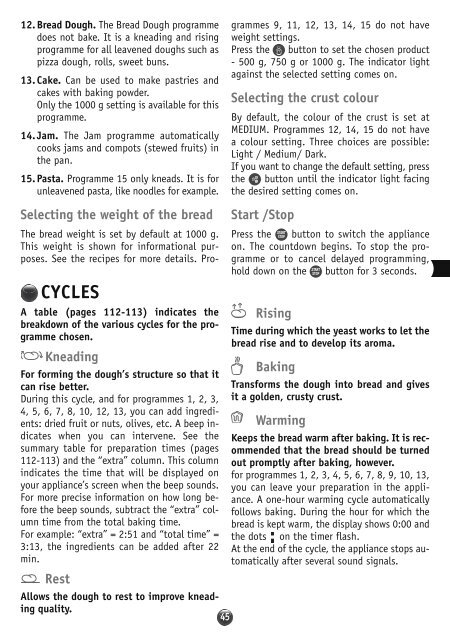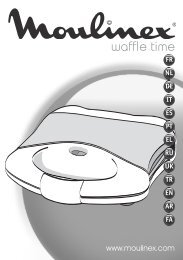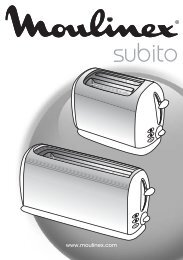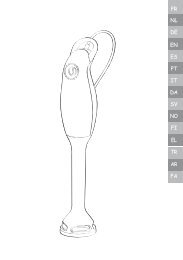home bread - bineo
home bread - bineo
home bread - bineo
You also want an ePaper? Increase the reach of your titles
YUMPU automatically turns print PDFs into web optimized ePapers that Google loves.
12. Bread Dough. The Bread Dough programme<br />
does not bake. It is a kneading and rising<br />
programme for all leavened doughs such as<br />
pizza dough, rolls, sweet buns.<br />
13. Cake. Can be used to make pastries and<br />
cakes with baking powder.<br />
Only the 1000 g setting is available for this<br />
programme.<br />
14. Jam. The Jam programme automatically<br />
cooks jams and compots (stewed fruits) in<br />
the pan.<br />
15. Pasta. Programme 15 only kneads. It is for<br />
unleavened pasta, like noodles for example.<br />
Allows the dough to rest to improve kneading<br />
quality.<br />
45<br />
grammes 9, 11, 12, 13, 14, 15 do not have<br />
weight settings.<br />
Press the button to set the chosen product<br />
- 500 g, 750 g or 1000 g. The indicator light<br />
against the selected setting comes on.<br />
Selecting the crust colour<br />
By default, the colour of the crust is set at<br />
MEDIUM. Programmes 12, 14, 15 do not have<br />
a colour setting. Three choices are possible:<br />
Light / Medium/ Dark.<br />
If you want to change the default setting, press<br />
the button until the indicator light facing<br />
the desired setting comes on.<br />
Selecting the weight of the <strong>bread</strong> Start /Stop<br />
The <strong>bread</strong> weight is set by default at 1000 g. Press the button to switch the appliance<br />
This weight is shown for informational pur- on. The countdown begins. To stop the proposes.<br />
See the recipes for more details. Programme or to cancel delayed programming,<br />
hold down on the button for 3 seconds.<br />
CYCLES<br />
A table (pages 112-113) indicates the<br />
breakdown of the various cycles for the programme<br />
chosen.<br />
Rising<br />
Time during which the yeast works to let the<br />
<strong>bread</strong> rise and to develop its aroma.<br />
Kneading<br />
For forming the dough’s structure so that it<br />
can rise better.<br />
During this cycle, and for programmes 1, 2, 3,<br />
Baking<br />
Transforms the dough into <strong>bread</strong> and gives<br />
it a golden, crusty crust.<br />
4, 5, 6, 7, 8, 10, 12, 13, you can add ingredients:<br />
dried fruit or nuts, olives, etc. A beep in- Warming<br />
dicates when you can intervene. See the<br />
summary table for preparation times (pages<br />
112-113) and the “extra” column. This column<br />
indicates the time that will be displayed on<br />
your appliance’s screen when the beep sounds.<br />
For more precise information on how long before<br />
the beep sounds, subtract the “extra” column<br />
time from the total baking time.<br />
For example: “extra” = 2:51 and “total time” =<br />
3:13, the ingredients can be added after 22<br />
min.<br />
Rest<br />
Keeps the <strong>bread</strong> warm after baking. It is recommended<br />
that the <strong>bread</strong> should be turned<br />
out promptly after baking, however.<br />
for programmes 1, 2, 3, 4, 5, 6, 7, 8, 9, 10, 13,<br />
you can leave your preparation in the appliance.<br />
A one-hour warming cycle automatically<br />
follows baking. During the hour for which the<br />
<strong>bread</strong> is kept warm, the display shows 0:00 and<br />
the dots on the timer flash.<br />
At the end of the cycle, the appliance stops automatically<br />
after several sound signals.





